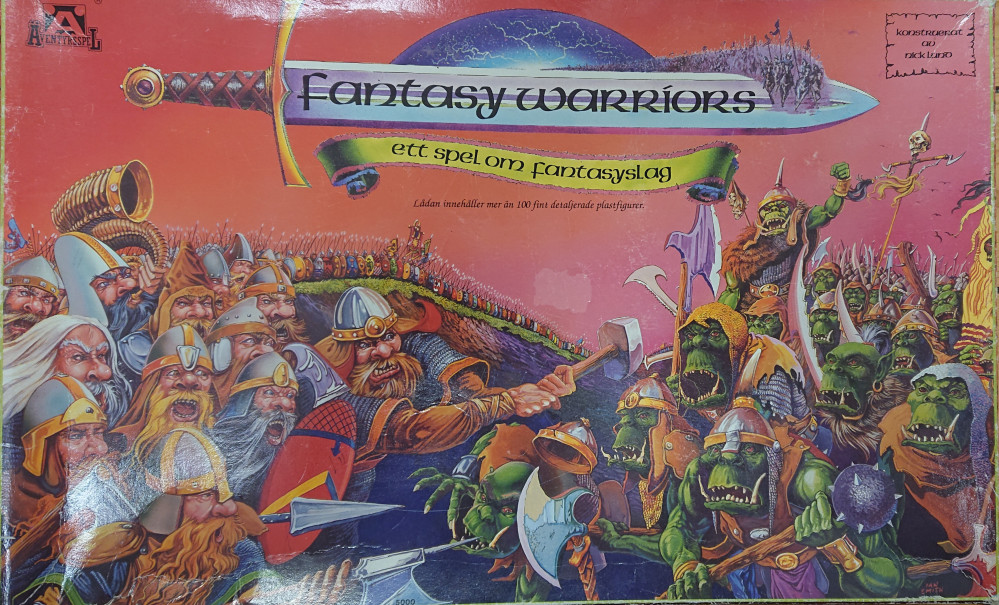
Armies of Fantasy Warriors
Fantasy Warriors - The Game, Part 1
I’ve always taken a keen interest in history from the large sweeping developments all the way down into the details on a micro scale. As my interest in Fantasy Warriors started I did a bit of research into the game from what was available online. Although not a wealth of sources and information, a few nuggets of the game’s history are available. So without further ado, let’s go on a ride through the history of Fantasy Warriors.
Fantasy Warriors was released in 1990 from Grenadier Models. The game was designed by Nick Lund in cooperation with Mark Copplestone and Doug Cowie. In the late eighties and earlier the nineties there were several rules systems available on the fantasy miniature games market. Games Workshop’s Warhammer Fantasy Battles 3rd edition was released in 1987 and the same year Ral Partha released Rules According to Ral: Chaos Wars. In 1989 the 2nd edition of Advanced Dungeons & Dragons Battlesystem came out from TSR, sporting the ability to run your roleplaying character in a miniature wargame. 1990 also saw Fantasy Warlord released from Folio Works with its accompanying magazine Red Giant. Grenadier Models, Ral Partha and Citadel Miniatures were the big three companies producing fantasy miniatures suitable for both roleplaying and miniature games. At the time, no company was as big and dominating as can be seen in the hobby space of today. With Fantasy Warriors Grenadier Models took a new outlook on what a miniature game should be, the two player starter box with miniatures had arrived. It would be until 1992 that something similar was released by Games Workshop with 4th ed Warhammer Fantasy Battles and the Battle Masters game released in cooperation with Milton Bradley.
The Fantasy Warriors two player boxed starter set came with 102 miniatures, 51 orcs and 51 dwarves with three sculpts of each race. The orcs were a spearman, a swordsman and a bowman with 17 of each. The dwarves had a spearman, a double-handed axe man and a crossbowman with 17 of each too. The miniatures were in plastic and sculpted by Mark Copplestone. Together with the rulebook, quick reference sheet, dice, a ruler and the 150 counters you had everything you needed to run a game straight out of the box. The miniatures were mono-pose, and as far as I can tell, didn’t come on a sprue so you didn’t even have to clip them off. The only obstacle to start gaming on Christmas morning was having to read the rulebook.
The box itself is quite interesting. I really do love the front box art, and I wish I could find a good enough picture of it to have a poster made out of it. Unfortunately my lid is too badly damaged to remake it into a poster. On the back we find what today is standard in miniature games, that is a picture of the content in all its glory. Since, I suspect that Fantasy Warriors was the first miniature game in a boxed set with miniatures in it, the game could be seen as setting the standard for the future, although I guess it was pretty common to show the content of any boxed product on the back of the box. So maybe I’m a bit too much of a fan…
But it is really the sides of the bottom part of the box that is ingeniously used. The only color components in the box are the many counters and the ruler (that was a part of the counter sheet). With the rulebook being black and white, it can’t really be used for a painting guide of the miniatures. So Grenadier Models decided to use one each of the long sides of the box as a painting guide for the Dwarves and Orcs respectively. On the side of the box we also get to see miniatures painted differently as inspiration. Especially notice the creative use of shields at the top of the spears to create standard bearers.
The rulebook sports 55 pages, out of which about 43 are rules, so there was still a fair bit of reading before your first battle. Spread throughout the rulebook is a dwarf and an orc that gives the warchief, the player that is, tips on how to play the game. The Fantasy Warriors rules contained some interesting game mechanics that we would see return many years later in other games. These include pre-battle scouting, the use of boasts, a stat defining how the miniature operates in darkness and daylight, a mechanic to establish time of day or night for the battle, an order issuing command system which include the use of messengers, an intimidation phase at the beginning of the turn and the ability of “Blackening the sky” in the shooting phase. In all in several ways an innovative rule set with mechanics supporting a game narrative and leaning more towards friction and simulation than chesslike gaminess.
The game was released in at least 5 different language versions. The original is the english language version with a Grenadier Models logo on the box that came out in 1990. Due to the agreement between Grenadier Models and swedish Adventure Games a swedish language version was released in 1991 with a box that has the Adventure Games logo. A year later, in 1992, a german language version was released by the german company Welt der Spiele. As far as I can tell the rule book seems to be in german, at least the front cover, but the box has got the Grenadier Models logo. There is also a potentially elusive spanish version. There are pictures of the game box that has the under title, “a game of fantasy battles” and the rule book in spanish on an auction site with a seller from Spain. The game box has the Grenadier Models logo just as the german version, unfortunately the year of release is absent. Since both the swedish and german versions were released in cooperation with local game companies, it seems plausible that the spanish version was too. Whether there at this point was an italian version of the game or not I do not know, but there would be one a little bit later on.
Again, the translation of the rule book into at least 4 languages potentially more during the first years of the game also seem to be a front runner among fantasy miniature games. The only other miniature game translated into swedish would be the mini rulebook of the 5th edition Warhammer Fantasy Battles coming out in 1998. The 4th (1992) and 5th (1996) edition of Warhammer Fantasy Battles would see translations into at least german, french and spanish. If you happen to know more about Fantasy Warriors in different language editions, what companies released them, the year of their release and any other potential quirkiness about them I would be very interested to hear about it. Fantasy Warriors just seem to be the game that continues to surprise, and not only in the Before the Battle phase.









































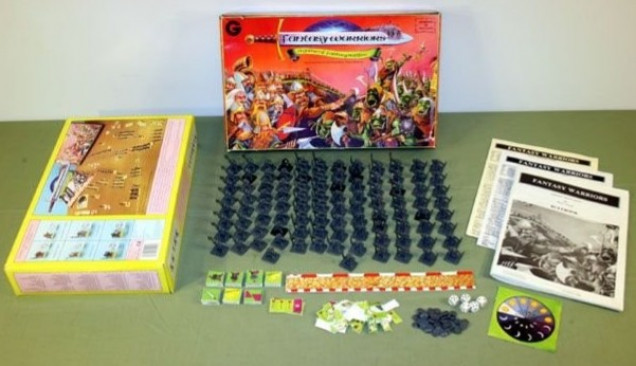
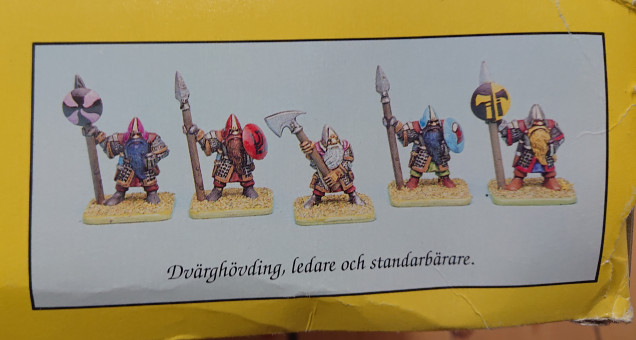


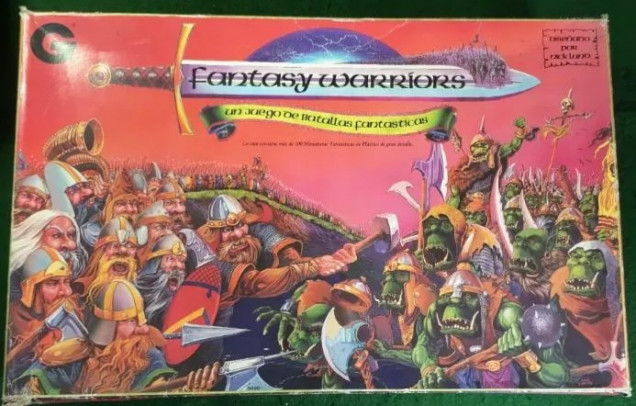
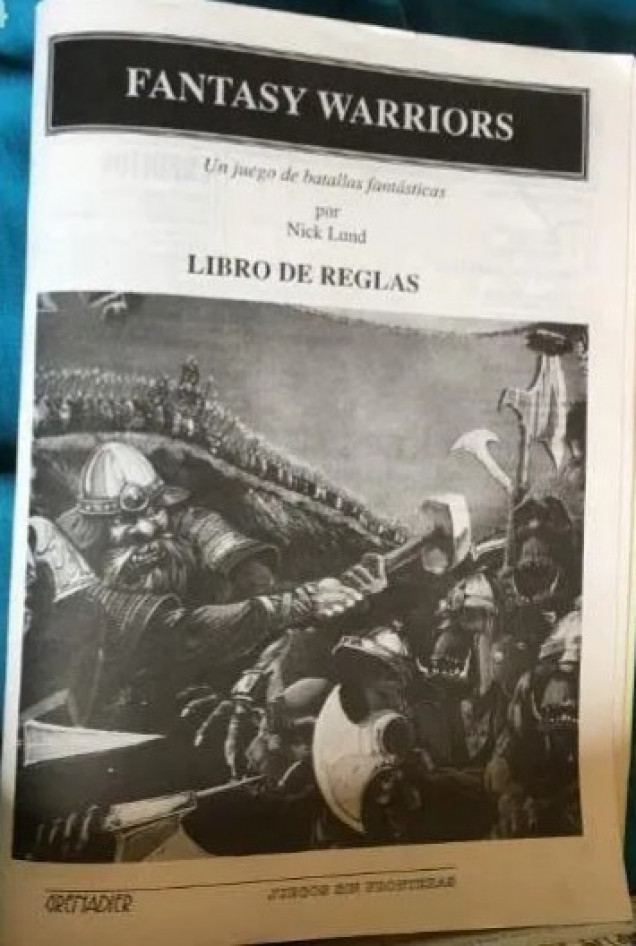

































I am 90% sure that the version I did pick up in Denmark – way too many years ago – where in English.
Interesting, one more piece for the puzzle! I guess it wasn’t the Äventyrsspel version then. Seem like the swedish version is the only one with a non-Grenadier logo too. Thanks!
Wow! Great article! I read about this game when I was a kid. is 17 of each of 3 troop types really enough minis to play with? I know sometimes there’s a disconnect between starter set forces and the “real” game. Also will it effect game mechanics if I rebase the orcs to 25mm squares and the dwarves to 20mm squares, instead of the rectangle they come molded with?